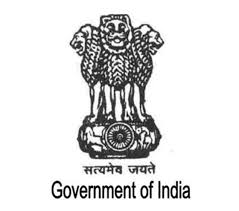The Indus Valley civilization, one of the world's oldest, flourished during the 3rd and 2nd millennia B.C. and extended into northwestern India. Aryan tribes from the northwest infiltrated the Indian subcontinent about 1500 B.C.; their merger with the earlier Dravidian inhabitants created the classical Indian culture. The Maurya Empire of the 4th and 3rd centuries B.C. - which reached its zenith under ASHOKA - united much of South Asia. The Golden Age ushered in by the Gupta dynasty (4th to 6th centuries A.D.) saw a flowering of Indian science, art, and culture. Islam spread across the subcontinent over a period of 700 years. In the 10th and 11th centuries, Turks and Afghans invaded India and established the Delhi Sultanate. In the early 16th century, the Emperor BABUR established the Mughal Dynasty, which ruled India for more than three centuries. European explorers began establishing footholds in India during the 16th century.
By the 19th century, Great Britain had become the dominant political power on the subcontinent. The British Indian Army played a vital role in both World Wars. Years of nonviolent resistance to British rule, led by Mohandas GANDHI and Jawaharlal NEHRU, eventually resulted in Indian independence, which was granted in 1947. Large-scale communal violence took place before and after the subcontinent partition into two separate states - India and Pakistan. The neighboring nations have fought three wars since independence, the last of which was in 1971 and resulted in East Pakistan becoming the separate nation of Bangladesh. India's nuclear weapons tests in 1998 emboldened Pakistan to conduct its own tests that same year. In November 2008, terrorists originating from Pakistan conducted a series of coordinated attacks in Mumbai, India's financial capital. Despite pressing problems such as significant overpopulation, environmental degradation, extensive poverty, and widespread corruption, economic growth following the launch of economic reforms in 1991 and a massive youthful population are driving India's emergence as a regional and global power.
India is a federal parliamentary republic.
Source: CIA World Factbook
Members:
Resources
Displaying 76 - 80 of 91Kerala Conservation of Paddy Land and Wetland Act, 2008 (Act No. 28 of 2008).
This Act aims to regulate the conversion and development of paddy fields and protect wetland areas in order to promote agricultural growth, ensure food security and sustain the ecological system in the State of Kerala.The Act provides for the establishment of a Local Level Monitoring Committee in each Panchayat or Municipality, a State Level Committee and a District Level Authorized Committee in each District to decide on the reclamation of paddy land for public purposes or for construction of residential building for owners of the paddy land.The Act prohibits the conversion or reclamation
Arunachal Pradesh Urban and Country Planning Act, 2007.
This Act provides for the establishment of the State Urban and Country Planning Board and defines its composition and its powers and functions.The Board shall guide, direct and assist Local Planning Authorities to frame policies in matters relating to the planning, development and use of rural and urban land in the State.The State Government or the Board may declare any area to be a Local Planning Area and shall constitute for each area a Local Planning Authority which shall have the power to prepare a Present Land Use Map and a Land Use Register in the form to be prescribed indicating the
Himachal Pradesh Ancient and Historical Monuments and Archaeological Sites and Remains Act, 1976 (Act No. 32 of 1976).
This Act provides for the preservation of ancient and historical monuments and archaeological sites and remains.The Government will have the power to declare monuments to be protected monuments and to declare archaeological sites and remains to be protected areas. The Director may, with the sanction of the Government, purchase, take lease or assume the guardianship of any protected monument, for its protection or preservation. The Government may also enter into a written agreement with the owner of any protected monument for its maintenance and preservation.
Delhi Ancient and Historical Monuments and Archaeological Sites and Remains Act, 2004 (Act No. 9 of 2005).
This Act provides for the preservation of ancient and historical monuments and archaeological sites and remains.The Government will have the power to declare monuments to be protected monuments and to declare archaeological sites and remains to be protected areas. The Director may, with the sanction of the Government, purchase, take lease or assume the guardianship of any protected monument, for its protection or preservation. The Government may also enter into a written agreement with the owner of any protected monument for its maintenance and preservation.
Kerala Forest (Vesting and Management of Ecologically Fragile Lands) Amendment Act, 2009 (Act No. 32 of 2009).
This Act amends the Kerala Forest (Vesting and Management of Ecologically Fragile Lands) Act, 2003 by inserting two new sections 10A and 10B providing for dispute redressal in respect of lands having an extent of not more than two hectares and for the constitution of the Ecologically Fragile Land Claim Dispute Redressal Committee.
Amends: Kerala Forest (Vesting and Management of Ecologically Fragile Lands) Act, 2003 (Act No. 21 of 2005). (2005)


